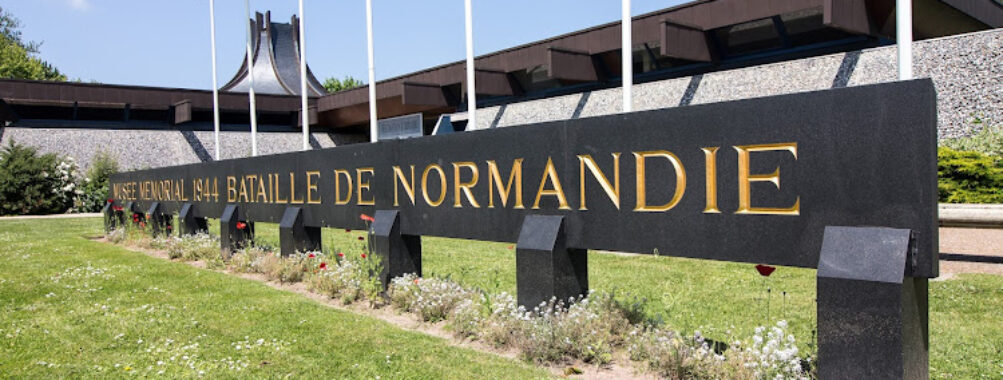
Museum of the Battle of Normandy
Table of Contents
Description
If you’ve ever found yourself fascinated—or even a little overwhelmed—by the sheer scale of World War II’s Normandy campaign, the Museum of the Battle of Normandy in Bayeux is the kind of place that helps make sense of it all. It’s not just another dusty history museum where you nod politely and shuffle along; this place really digs into the gritty details of the D-Day landings and the intense battles that followed throughout the summer of 1944.
Walking through its 2,300 square meters of exhibition space, you’ll find a chronological journey that starts with the Allied landings on June 6 and takes you through to the liberation of Paris. It’s a story told not just through words, but through an impressive collection of military equipment, artifacts, and even a gripping 25-minute archival film that pulls you right into the moment. The museum manages to balance the big picture with the personal—civilian life, the role of the Resistance, and the experiences of war correspondents all get their due spotlight, which is something I really appreciate. It’s history that feels alive and human, not just dates and dry facts.
One thing that stands out is how accessible the museum is. Whether you’re rolling in with kids or pushing a wheelchair, the layout and facilities are thoughtfully designed to welcome everyone. No restaurant on-site, so plan your meals ahead, but there are restrooms and plenty of space to take a breather. You’ll find it near the British Military Cemetery, so it’s easy to pair a visit here with some reflective moments outdoors, which adds a layer of depth to the experience.
Key Features
- Extensive exhibitions covering the D-Day landings and the Battle of Normandy in detail
- Authentic military equipment and artifacts that bring history to life
- Archival film presentation offering a vivid glimpse into the summer of 1944
- Themed sections highlighting the Resistance, General de Gaulle, Allied aviation, and civilian life during wartime
- Wheelchair accessible entrances, parking, and restrooms to accommodate all visitors
- Family-friendly atmosphere with exhibits suitable for kids
- Close proximity to historic sites like the British Military Cemetery in Bayeux
- Spacious 2,300m² exhibition area allowing for a comfortable, unhurried visit
Best Time to Visit
Honestly, the best time to visit the Museum of the Battle of Normandy depends a bit on your tolerance for crowds and weather. Summer months, especially July and August, see a surge of tourists, so expect it to be busier and maybe a bit noisier than you’d like if you’re after a quiet, contemplative experience. But hey, that’s also when the weather is at its friendliest for exploring Bayeux and the surrounding beaches.
If you’re like me and prefer a more relaxed pace, aim for late spring or early autumn. The weather is still decent, and the crowds thin out, giving you more space to absorb the exhibits without feeling rushed or jostled. Plus, visiting outside peak season means shorter lines and a better chance to chat with knowledgeable staff or fellow history buffs. Winter visits are quieter but can be chilly—though the museum itself is warm and welcoming.
How to Get There
Getting to the Museum of the Battle of Normandy is pretty straightforward, especially if you’re already in Bayeux. The town is well-connected by train and road, making it a convenient stop on any Normandy itinerary. From the Bayeux train station, it’s a short walk or a quick taxi ride to the museum, which sits close to the British Military Cemetery. If you’re driving, there’s wheelchair accessible parking available, which is a nice touch for those who need it.
For those coming from further afield, like Paris or Caen, the train journey is scenic and relaxing—perfect for mentally prepping yourself for the heavy history you’re about to dive into. Renting a car is also a solid option if you want the freedom to explore the D-Day beaches and other nearby sites at your own pace. Just be sure to plan your parking ahead, as Bayeux can get a bit busy during peak tourist season.
Tips for Visiting
Here’s a little insider advice from someone who’s been there: give yourself plenty of time. This museum isn’t a quick pit stop. There’s so much to see and absorb that rushing through would be a disservice. Take breaks, sit down when you need to, and watch the archival film—it’s a powerful way to connect emotionally with the story.
Don’t hesitate to ask questions if staff are around—they’re usually pretty passionate and can share insights that you won’t find on the plaques. Also, if you’re traveling with kids, the museum does a good job of making history engaging for younger visitors, but bringing along a few snacks and water might keep little ones happier during longer stretches of exhibits.
One thing I’ve noticed is that some visitors overlook the themed sections on the Resistance and civilian life, but those parts really add depth to the overall experience. War isn’t just about battles and generals; it’s about people’s lives turned upside down. Spending time there helps you appreciate the complexity of the conflict beyond just the military maneuvers.
Lastly, since there’s no restaurant inside, plan your meals around your visit. Bayeux has plenty of charming cafés and bistros nearby where you can unwind and chat about everything you’ve just taken in. Trust me, you’ll want to digest both the food and the history.
Location
Places to Stay Near Museum of the Battle of Normandy
Find and Book a Tour
Explore More Travel Guides
No reviews found! Be the first to review!